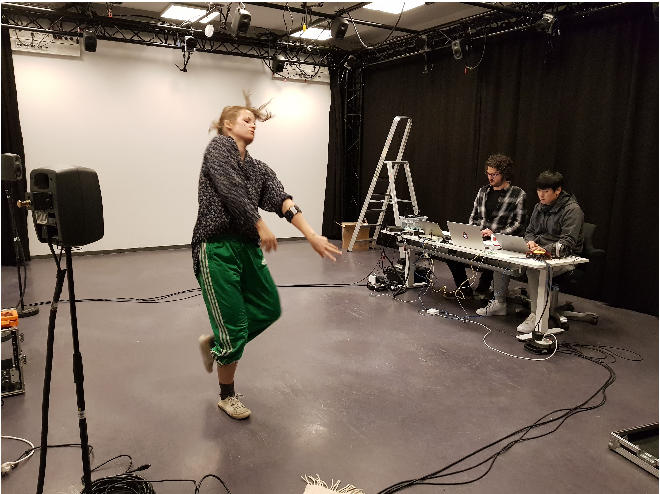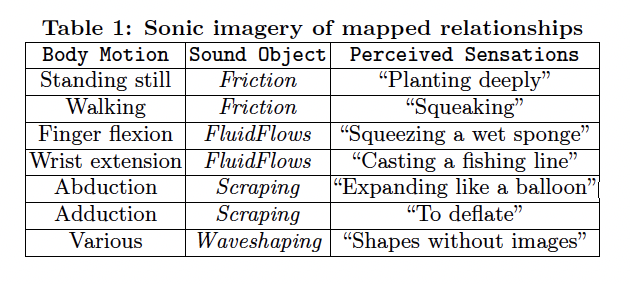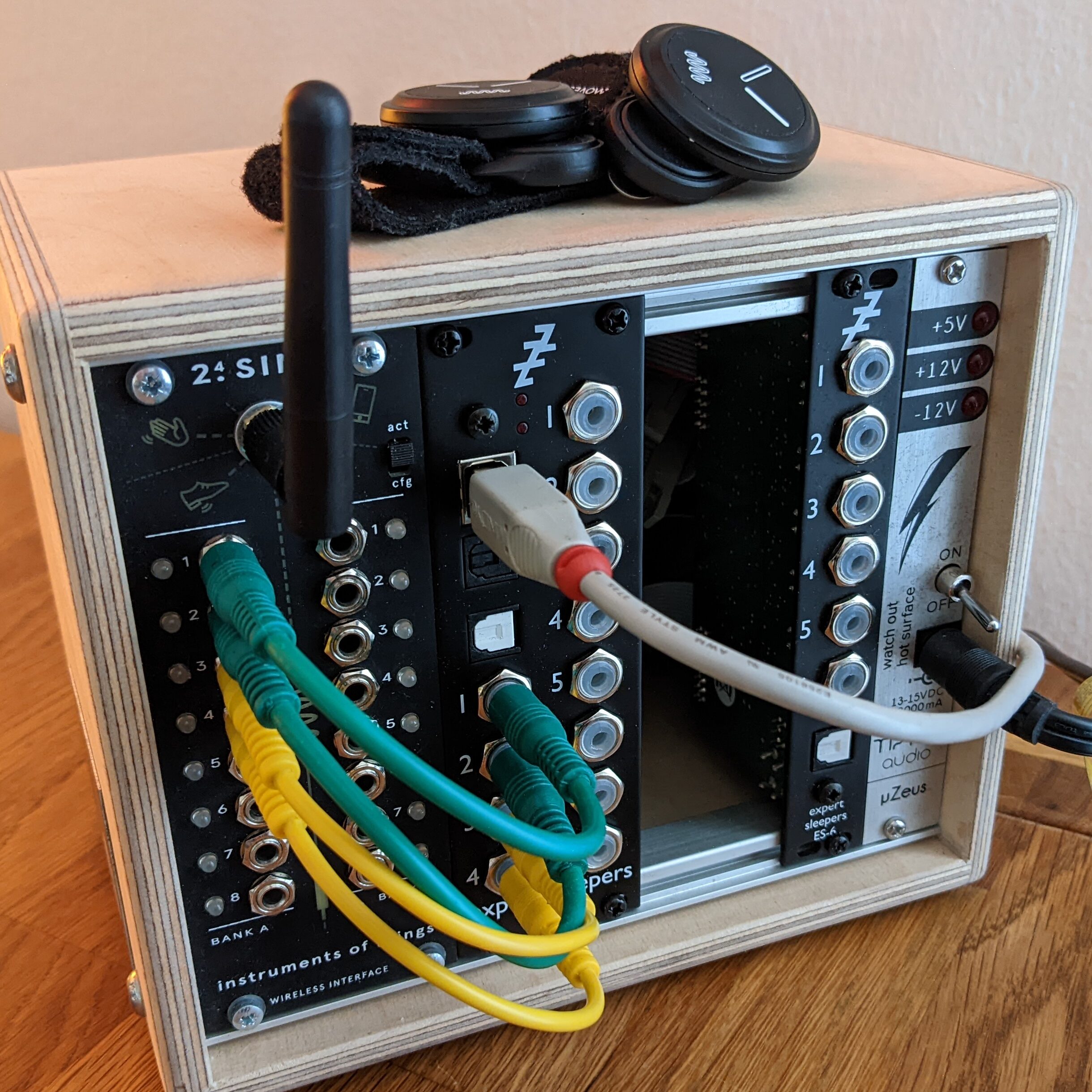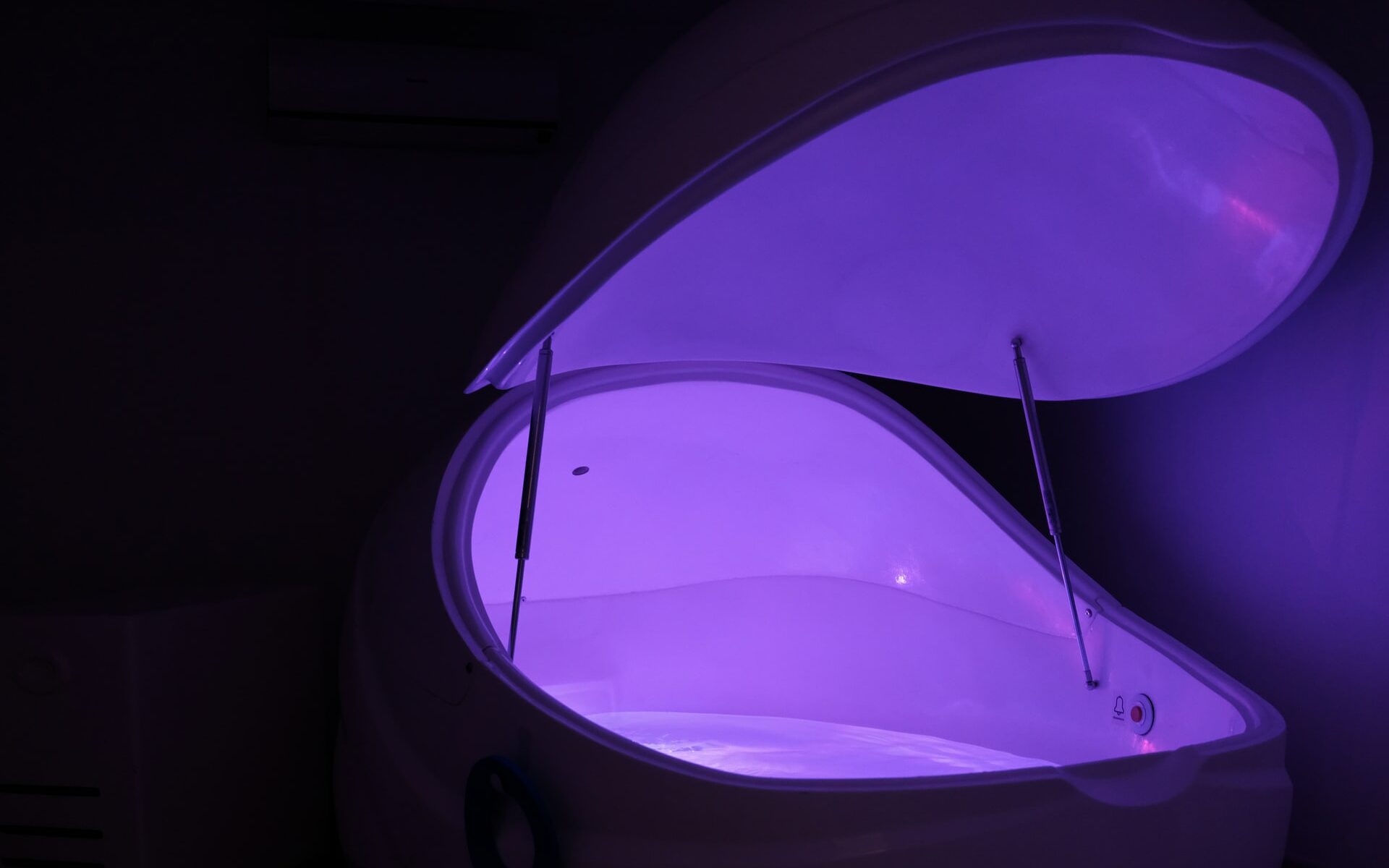
International Conference on New Interfaces for Musical Expression (NIME): The paper “Vrengt: A Shared Body-Machine Instrument for Music-Dance Performance” caught my attention because it explores the body as a musical interface. Since I am working on a face-tracking project that uses face gestures as a musical interface, the paper is of great relevance for my current work.
The paper is about the multi-user instrument “Vrengt”, which is developed for music-dance performance and in which dancer and musician interact co-creatively and co-dependently with their bodies and machines. “Vrengt” is based on the idea of enabling a partnership between a dancer and a musician by offering an instrument for interactive co-performance. The guiding question is to what what extent the dancer can adopt musical intentions and whether the musician can give up control of performing while still playing together. The focus is on exploring the boundaries between standstill vs motion, and silence vs sound. In the process, sonification was used as a tool for exploring a dancer’s bodily expressions with focus on sonic micro interaction. To capture a dancer’s muscle activity during a performance, two Myo gesture control armbands are placed on the dancer’s left arm and right leg. Moreover, the dancer’s sound of breathing is captured with a wireless headset microphone. Based on the aim of creating a body-machine instrument for a dancer to interact with her/his body and a musician with a set of physical controllers, the project members started with capturing muscle signals and breathing of the dancer. In this context EMG plays a big role: “Electromyogram (EMG) is a complex signal that represents the electrical currents generated during neuromuscular activities. It is able to report little or non-visible inputs (intentions), which may not always result in overt body movements. EMG is therefore highly relevant for exploring involuntary micro motion.”
The instrument offers great freedom in collectively exploring sonic interactions and the outcome/performance is structured in three parts:
– Breath (embodied sounds of dancer modulated and controlled by musician)
– Standstill (even though the dancer is barely moving, the audience can hear the dancer’s neural commands causing muscle contraction)
– Musicking (active process of music-making)
To create sound objects that approximate responsive physical behavior and are appropriate for continuous physical interactions, the Sound Design Toolkit (SDT) in Max was used. The sounds used boost the imagination of associating body movements with everyday sounds. The following figure displays the sonic imagery.

What I found especially interesting about the paper was the inclusion of the subjective evaluations of the dancer and the musician in the discussion part. From the musician view, it requires stepping out of the comfort. The familiar instrumental circumstances are exchanged by the athletic and artistic environment of a dancer. For the musician, it is important to understand the dancer’s feelings and develop a common language. Even though the dancer is in charge of the main gestural input, the musician decides on the sound objects, scaling and mix levels. For a dancer, performing with interactive sonification makes a big difference to dancing to music. The dancer describes listening as the main aspect for decision making and physical play and exploration happen while moving along intuitively. The dancer describes her experience as “not knowing where to, and how to, still with a clear sense of direction”, the focus shifts from the body to the sound.
In my view, this project offers interesting insights on developing a new way of communicating and creating art through a new type of body language and a new physical language. I think it has great potential to be part of art installation installations in an experimental context. It offers a great opportunity to open new ways of feeling one’s own body and hearing the consequences of one’s moves. “Vrengt” enables an individual music-dance performance as well as a creative collaboration between dancer and musician. As was clear from the text, through the shared control, musician and dancer both feel like “owners” of the final outcome, generating a feeling of being part of something bigger. For me, it was inspiring that the project turned the usual music-dance performance upside down by a dancer not moving to a given sound but creating the sound through movement. Nevertheless, it would be interesting to see the experiment in a more even bodily contribution of dancer and musician, because in the described setup, compared to the full-body experience of the dancer, the musician uses only his hands to operate with the computer.
If you are curious what “Vrengt” looks like in action, you can watch the following video of a live performance I stumbled across while researching the topic a bit further: https://www.youtube.com/watch?v=hpECGAkaBp0

REFERENCE
Cagri Erdem, Katja Henriksen Schia, Alexander Refsum Jensenius. Vrengt: A Shared Body-Machine Instrument for Music-Dance Performance. https://doi.org/10.48550/arXiv.2010.03779


